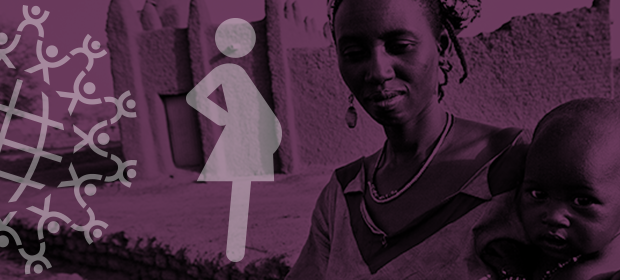Where We Work
See our interactive map


We know this. So how can we encourage change?
There are three main indicators commonly used to measure the quality of health care: structure, process, and outcome.
Structure refers to characteristics of the care setting, including facilities, medical equipment, and staff. Process means whether the services are continuously consistent with recommended guidelines. And outcome evaluates a client’s health as a result of the care he or she received.
While global health NGOs have paid close attention to structure and outcome measures, they’ve given less attention to improving health care quality through process measures. Indeed, in program design, process indicators are often seen as less useful than outcome indicators, and so not measured.
But for anyone on the receiving end of health service delivery—in a consultation for illness, or even a surgical intervention—the way that care is given is important.
Birthweights for newborns improved when processes in health facilities improved.
So how important is it to measure and change processes to improve quality?
In 1998, a research study in Jamaica found that improving structural quality and making more resources available had no significant bearing on the birthweight of newborns. Instead, the results indicated, birthweights for newborns improved when processes in health facilities improved.
In the case of Jamaica, a more complete prenatal exam—where the health worker checked the mother’s blood pressure, weight, and edema, and provided immunizations and counseling, among other services—resulted in a 128g increase in expected birthweight.
A similar study in 2002 in Indonesia attributed 60% of all perinatal deaths to poor processes. Only 37%, it said, were due to economic constraints.
What these studies are telling us is that while resources are important, the quality of care clients receive can hold greater statistical significance in the outcomes of basic health care in resource-constrained settings.
In 2012, the World Bank launched Service Delivery Indicators in Kenya, Senegal, Tanzania, and Uganda. Results showed clinical process guidelines were not followed closely in any nation. Specifically, adherence to clinical guidelines ranged from 22% to 49.7% in all clinical settings, dipping as low as 20% adherence in rural settings.
We know this is a low-cost area for improvement. So how can we encourage medical professionals to change?
In high-income nations, several methods are applied to encourage change among health workers. Some hospitals provide financial incentives for those who participate in quality-improvement projects, while others use financial penalties for those who refuse to participate.
A more cost-effective short-term method of encouraging change is peer recognition. Recognizing those peers who are complying with best practices can be effective particularly in hierarchical societies, though it has not been found to have long-term effects.
And educating health workers on the benefits of process improvement and how it can keep them and their clients safe is an easy way to encourage change. When health system leaders encourage employees to share ideas for change at all levels, the result is rapid empowerment and progress in the health care setting.
IntraHealth International developed a means to adapt these strategies for low- and middle-income countries called the Optimizing Performance and Quality (OPQ) approach. By engaging health workers at all levels in identifying process-related gaps, the OPQ approach allows workers to identify best-practice solutions for health care problems.
Change requires more than pure will.
For example, in Ethiopia the OPQ methodology was used to pinpoint maltreatment and develop women-friendly maternity care training manuals that provide physicians and nurses with guidelines for woman-centered, respectful, friendly maternity care. IntraHealth is at the forefront of improving the performance of health services and workforce training.
But, as we know, implementing change requires more than pure will. It takes buy-in from senior leadership, employees, and clients before the continuum of care improves.
The proven successes in Jamaica and other low- and middle-income countries offer helpful tactics to improve health care outcomes through process improvement in even the most vulnerable communities. These tactics can and should be applied as a meaningful intervention to improve stagnant maternal mortality rates, hospital-acquired infection rates, and the increasing prevalence of noncommunicable diseases in less-developed nations.
Get the latest updates from the blog and eNews




